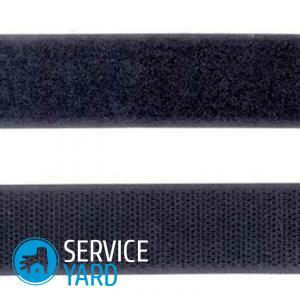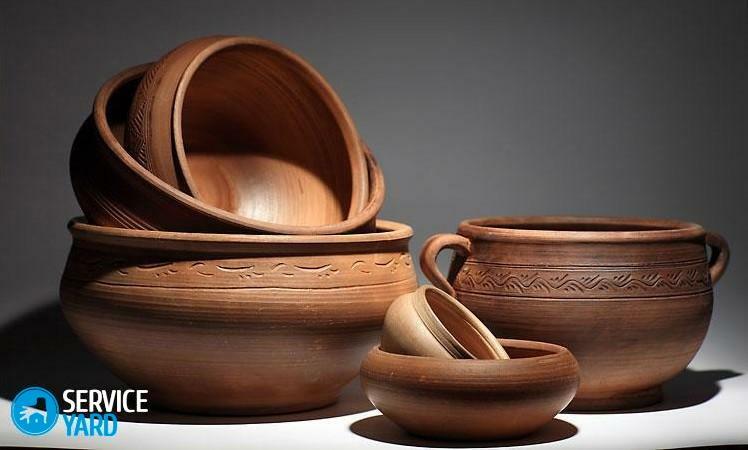Thickness - a special device for determining the thickness of the material or its coating layer which does not require compromising the integrity (cutting, partitioning, coating and micro-scratches, etc...). They explore the elements of metal structures; harboring layers putty, primer, paint and varnish; plastic products, glass, fiberglass, rubber, composites (coped with this task only ultrasonic thickness). About how to choose a useful instrument, and what thickness gauges are worthy to come to our independent rating of the top 5, read below.
CONTENT
- 1 Why do we need thickness?
- 2 Top 5 thickness gauges
- 3 Comparative table top thickness gauges
- 4 The most popular question of the thickness gauges
Why do we need thickness?
Advantages of the gauge over other mechanical and optical measurement methods are obvious:
- instant results (1-2);
- high accuracy and reliability of the evidence;
- ultimate ease of operation (minimal skills);
- ignoring the adverse conditions (in most cases sufficient to have access to one surface);
- time and cost savings.
Where to use?
In the industrial environment, the tool is indispensable, for example:
- for car manufacturing, river and sea vessels - to identify the state of body and skin;
- in construction - special coatings for thickness, material imparting specific properties (corrosion, galvanoizoliruyuschie, etc...);
- in the oil and gas industry and housing and communal services - to detect worn sections of pipelines, containers, tanks (warning or alarm);
- in repair and insurance business - to control the quality of work and evaluation of property.
Does he need a simple man in the street? Judge for yourself.
When purchasing a used / have a car, you have the opportunity to find the carefully camouflaged "broken" parts, dents and scratches. Perform the density measurements paint at several locations, get the deviation (20 microns) and insist on the discount. Check the new cars, because the fact of operative repair damage in transit (in the dealer's shop) is very common. Similarly monitor repair when take away "iron horse" of the garage.
Occasionally examine heating equipment (boilers, pipes) for thinned walls (Rust) of crack and scale thickness, which leads to catastrophic consequences.
Finally, if you have started the construction, you have on hand will be the reliable assistant for studying the quality of painting facades and roofs, lining thickness or window panes.
What to look for when choosing?
If you plan to buy thickness gauge, use the following "cheat sheet" to not miss important selection criteria:
- Device Type.
- The range and accuracy (accuracy, pitch).
- Object characteristics (material, the minimum thickness, area diameter, radius of curvature).
- Functional (measurement modes, memory, calibration, switch ports).
- Controls (keypad, display, indicators).
- Response Mechanism ( "the hammer", "button" Presser automatic).
- Form factor and size.
- The term autonomous power.
- Degree of protection (temperature, humidity).
Example 1. If you work only with steel car body, it makes no sense to overpay. Your choice - the electromagnetic type. If you regularly make expertise bumpers, body parts, decorative items and accessories - Take the universal eddy current or a combined model.
Example 2. Triggers mechanisms comfortable to hold in hand. But modern push-button or automatic models tend to be more compact and functional. Moreover, with the pressure sensor device has only one point of tangency, simplifies the work of the metal and the bends in remote places.
Top 5 thickness gauges
Mechanical
Obsolete type, which, however, may well come in handy in the garage at the cottage, in the laboratory or workshop. It does not require batteries.
GRIFF TR-10-30
It works with any sheet metal products and materials (plastic, glass, wood, metal) - this is important. Manual. With normalized force. The housing is designed as a heavy-duty metal bracket with stiffeners, on which there is a carrying handle. On the bottom half of the fixed measuring polished heel. Between the jaws clamp is workspace (departure - not more than 30 mm). The gauge is designed for a range of up to 10 mm with a scale division of 0.01. The only limitation - in the air should not be present pair and aggressive substances gases.
Pros: the minimum price (5 000 rubles.), exemplary reliability (Calibration period - 1 year).
Minuses: "Coarseness" scale, required access to both surfaces of the object (pipe wall thickness or density of the outer cover will not be determined).
Price: ₽ 5 416
Magnetic
It is used to calculate the height of nonmagnetic coatings (chrome, zinc, putty, primer, paint, enamel) supported on a magnetic base (iron, steel). Based on the strength of the interaction fields, which weakens with increasing harboring layer. Previously, for this purpose we took a simple magnet wrapped in a napkin.
TESTBOY 74
This "felt tip" 16 cm long and weighing 80 g is compact enough to carry in a pocket. The gadget is powered by a single battery 12 V23 V and has three multi-colored LED signal: Green (0 - 100 mm), yellow (150 - 300 microns), red (400 microns). These ranges are pre-calibrated and accurately during assembly. For correct readings the thickness of the metallic base should exceed 0.8 mm. Tester is ideal for quick rough check of body parts for damage. Why rough? Because the tolerance is within 15%. This is enough to detect strong differences layer with putty. But a thin layer of new paint device certainly miss. The apparatus operates stably at temperatures up to 40 ° C and high humidity (90%). Price: about 6000 rubles.
Price: ₽ 5 869
Electromagnetic
Advanced electromagnetic models use the same operating principle as their predecessors, but with qualitatively different precision thanks to magnetic induction, Hall effect and electronic modules. To create fields and calculating oscillation embedded ferromagnetic rods and the strain gauge. As a result, the allowable error rate does not exceed 3%.
Pros: high precision measurement, ergonomic form factor, easy management.
Minuses: limited list of scanned metals (iron, steel).
Traditional lack of frustrating the most, since, for example, aluminum parts are present in all modern cars manufactured in Europe. From it often do fenders, hood, trunk, doors, bumpers, covers and so on. D.
Eddy Current
Some Soup this type do not need magnetic properties of iron and, hence, advantageously exploited to estimate the thickness of the coating of nonferrous metal (copper, aluminum and the like. D.).
Probe device creates its own alternating field which generates eddy currents (Foucault) is approached to a conductive substrate. Currents are recorded. The voltage on the winding shows a non-conductive layer thickness.
MEGEON 19210
This model is unfortunately only work with magnetic metals, but shows a high accuracy (3%), wide range (0.1 - 1800 microns) and impressive array of additional functions. These include:
- multiple measurement modes (single, continuous and differential) and calibration (Base, zero, two points);
- automatic shutdown to save battery power (AAA, 2 x 1.5 V);
- intuitive push-button control panel and LCD display with backlight for reading the values in dimly lit places.
It allowed a certain freedom in choosing the point of application: The minimum thickness - 0.5 mm, area - 12 mm, the radius of curvature - 11 mm. The product tolerates high temperatures (40 ° C) and humidity (95%), as a special calibration set included. Price: 12 000 rub.
Price: ₽ 11 665
Compounded
It combines the advantages of electromagnetic and eddy current thickness gauges for parallel operation with ferrous and nonferrous metals. Maximum precision is guaranteed in any case.
CEM DT-156
Very interesting representative of the combined type of affordable price (11 000 rub.). Is powered by two batteries (AAA) of 1.5, determines the base material. It operates in dotted and continuous modes. In the second case shows the value min / max, and standard deviation. To 320 results written into memory 4 and the group may be transmitted to a computer via USB-cable for subsequent processing (disk with software). You can customize the alarm levels.
Confirmed wide range (0 - 1250 microns) and good accuracy on steel (3% and 1 micron pitch, radius of curvature 1.5 mm) and aluminum substrates (3%, 1.5 micron pitch, curvature of 3 mm). The set includes immediately 5 calibration standard coating films, metal samples shockproof case. The relative lack of only one: the location of the sensor in the bottom of the forces to turn the display upside-down when the vertical measurements, which is not very convenient.
Price: ₽ 10 800
Ultrasonic
The most accurate and processing devices working with all types of bases: ferrous and nonferrous metals, plastics, glass, fiberglass, ceramics, rubber and composites. The sensor probe generates a pulse which is reflected from the base and transformed into electric signal. The echo of the sound waves is digitized. The allowable percentage error of 1%.
MEGEON 19130
The device is 21 000 rubles. It is in the form of a compact "phone" (72 × 29h146) with a keypad and a display with integrated illumination. Powered by three batteries (AAA) of 1.5 V. Ranges from 1 to 100 mm (step 0.01), 100 to 300 mm (step 0.1). Exemplary accuracy of 1% is achieved by an automatic self-calibration. The point of application imposes certain limitations: diameter - 10 mm, the radius of curvature - of 7 mm. Built-in memory stores up to 12 results. Additionally, there are: the preliminary adjustment of different materials; mapping the contact status; inch and metric system; notification when a low battery level and automatically turn off at rest. Components includes two 5 MHz transducer (6, 10 mm), a binder (5 mL), the reference block and rigid shipping case.
The overall conclusion is that the unit is ideal for universal thickness measurement of any surface, but is not suitable for monitoring the external layers. This stems from the range starting from 1000 microns. Similarly, a significant drawback have almost all portable ultrasonic model.
Price: ₽ 21 380
Comparative table top thickness gauges
| Title | Main characteristics | Price |
| GRIFF TR-10-30 | Hand with normalized force dial gauge has a temperature range up to 10 mm with a 0.01 scale division. | ₽ 5 416 Buy |
| TESTBOY 74 | Length 16 cm, weight 80 g, powered by battery 12 V23 V, has three different color LED signaling: green (0 - 100 mm), yellow (150 - 300 microns), red (400 microns). | ₽ 5 869 Buy |
| MEGEON 19210 | There are several measurement modes (single, continuous and differential) and calibration (Base, zero at two points), automatic shutdown to save battery power (AAA, 2 x 1.5 V). | ₽ 11 665 Buy |
| CEM DT-156 | Is powered by two batteries (AAA) of 1.5, determines the base material. | ₽ 10 800 Buy |
| MEGEON 19130 | Ranges from 1 to 100 mm (step 0.01), 100 to 300 mm (step 0.1), 1% of an exemplary accuracy is achieved by an automatic self-calibration. | ₽ 21 380 Buy |
The most popular question of the thickness gauges
Do I need a thickness when choosing a car?
Yes. Buying too expensive to risk. If you can not buy, ask for rent "at once." On the other hand, if you are not confident in their abilities, it is better invite for a visit of a qualified master or use the garage facilities. Professionals to do everything quickly and find the damage that you might miss.



